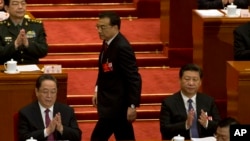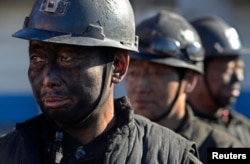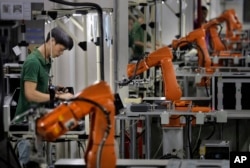China has announced a wide range of measures that it believes will help keep the world’s second-largest economy growing by at least 6.5 percent this year, even as slowing global growth and massive job layoffs loom for some industries.
Chinese Premier Li Keqiang opted to announce the economic growth objective as a range of 6.5 to seven percent of gross domestic product while presenting a key government report on Saturday. China achieved 6.9 percent growth last year, against the target of seven percent as the economy grew at its slowest pace in a quarter century.
"I think the aim is to lower the expectations and make it more flexible," said Zhang Yunling, member of the national committee of the Chinese People's Political Consultative Conference or CPPCC. "There are difficulties in economic restructuring and the global economic situation is worse than expected."
Analysts said Li appeared to be discouraging high expectations, given the risk of a political backlash from the ongoing economic slowdown.
"China will face more and tougher problems and challenges in its development this year, so we must be fully prepared to fight a difficult battle,” Li said, in remarks to the country’s largely rubber-stamp legislature, the National People’s Congress or NPC.
Looming layoffs
Earlier this week, even before the NPC and CPPCC – a political advisory body – began hosting their annual top-level meetings in Beijing, one official said China’s coal and steel industries expect to layoff 1.8 million workers as enterprises deal with overcapacity.
The official did not give a timeline for the layoffs.
Quoting sources, the Reuters news agency has reported that China aims to layoff as many as eight million workers over the next two to three years.
It was clear from Li’s remarks that controlling job losses are a top priority. In his speech, Li said the government aims to create 10 million new urban jobs this year and 50 million by 2020.
In an indication of just how mindful China is about of the possibility of large-scale layoffs, Li announced that authorities aim to provide training for some 21 million migrant workers and employment services for military personnel who have been demobilized. A generous $16 billion has also been carved out of the budgetary cake for the purpose of retraining and resettling unemployed workers.
"Announcement of funds to support displaced workers are welcome provided laid off workers are provided with pensions and retraining in order to move them into productive areas of the economy like logistics and services," said Mats Harborn, vice president of the European Chamber of Commerce in China.
Unemployment set at 4.5 %
China has set a goal to keep unemployment at or below 4.5 percent, but it faces a double-edged challenge as it seeks to restructure its economy and create new jobs in the growing service sector, while facing the possibility of massive layoffs in traditional industries like coal mining and steel production.
In his speech, Li also talked about the importance of helping more than 7.6 million graduates who will join the work force this year to find employment. He said that incentives would be used to encourage companies to hire graduates and help them start their own businesses.
China’s ruling communist party places a high priority on maintaining stability and keeping unemployment low has long been seen as way of preventing possible unrest or broader dissatisfaction that could potentially threaten its grip on power.
Mei Xingbao, a prominent businessman and CPPCC representative, told VOA earlier in the week that there would be pressures on social stability from layoffs. But, the pressure is unlikely to be as great as in the past because of preparations authorities have made to minimize the impact, he added.
“In some places it will be inevitable that there will be sit-ins and petitions made to authorities, and that is why the government needs to do a good job calming down those who have lost their jobs and implementing its policies,” Mei said.
Low income, high spending
Li admitted that tax income from industries has come down sharply because of the economic softening. But he announced higher doses of expenditure in major infrastructure projects that include housing and railways networks. The result is a high level of deficit financing to support the increased spending in 2016, though past Communist governments have shunned this method of balancing budgets.
"Government spending is still crucial for development. The new expenditures will not cause problems because central government debt is still low and inflation is not high," Zhang said.
There are still inadequacies in the work of the government, analysts said. Some reforms, policies, and measures have not been fully implemented; a small number of government employees either do not or are unable to fulfill their duties, or behave irresponsibly; and the corruption and misconduct in some sectors cannot be ignored.
VOA Mandarin service correspondent Ye Bing also contributed to this report.












